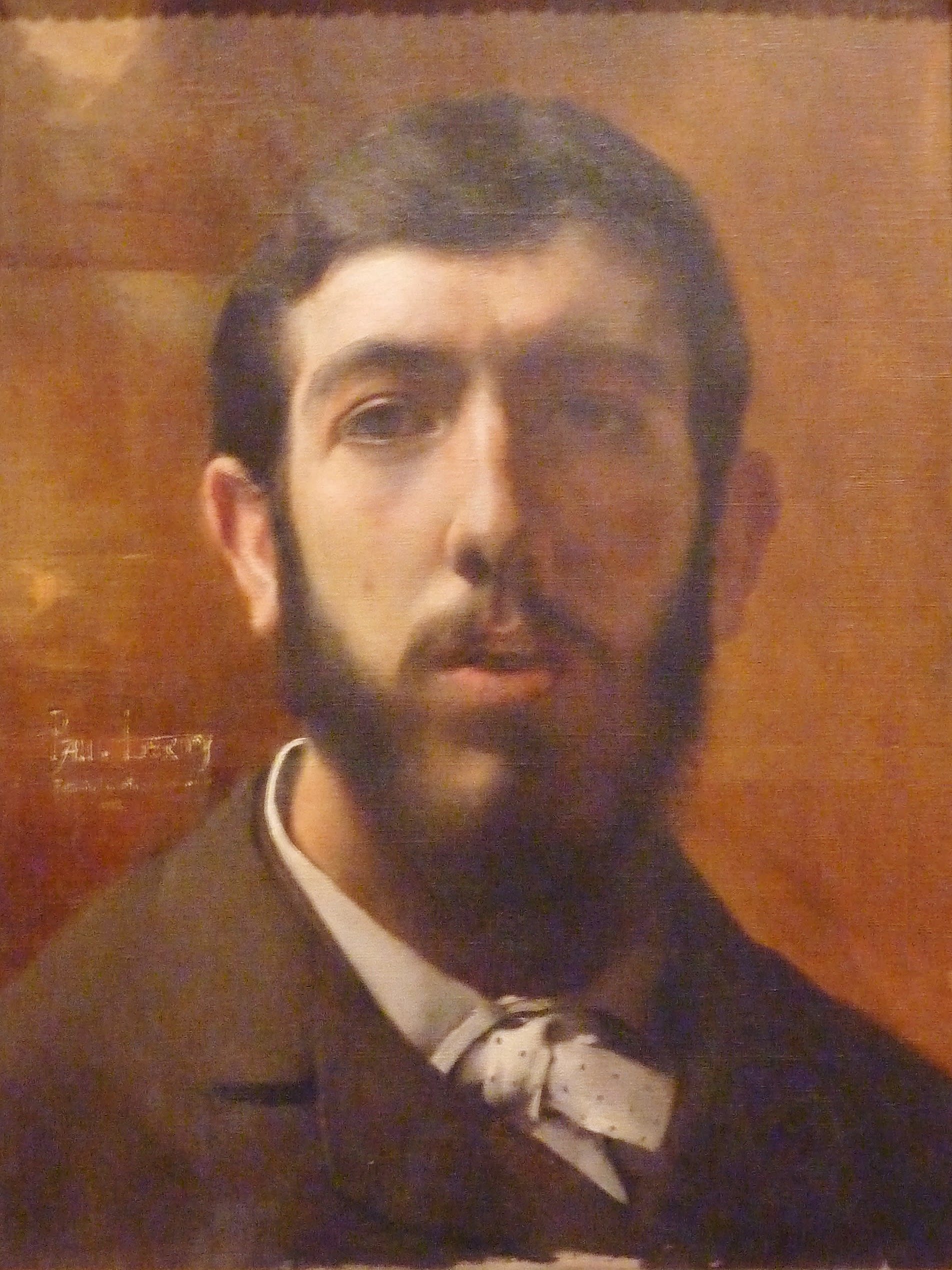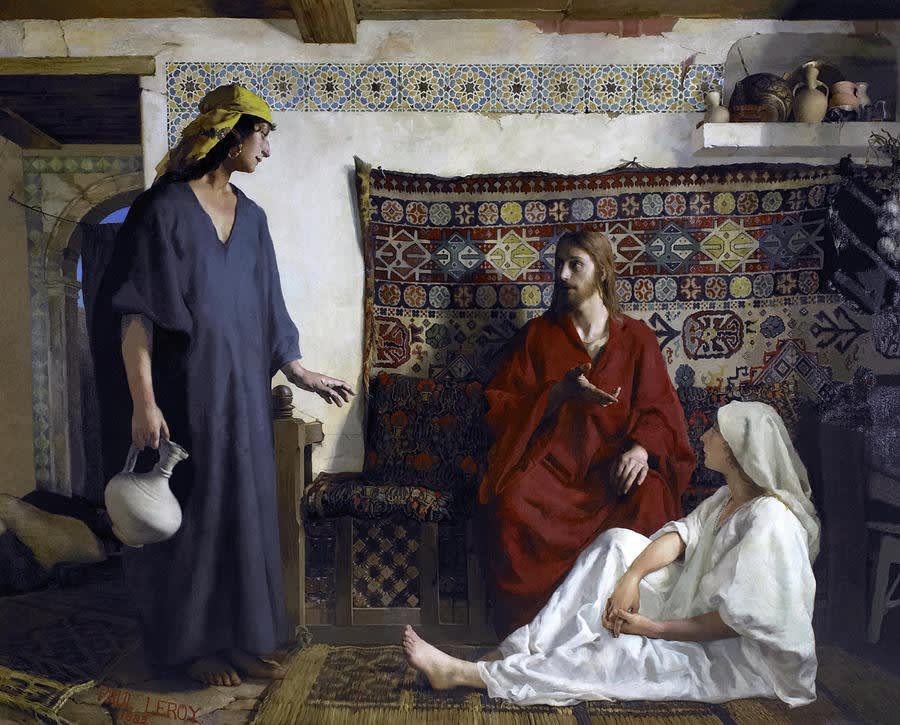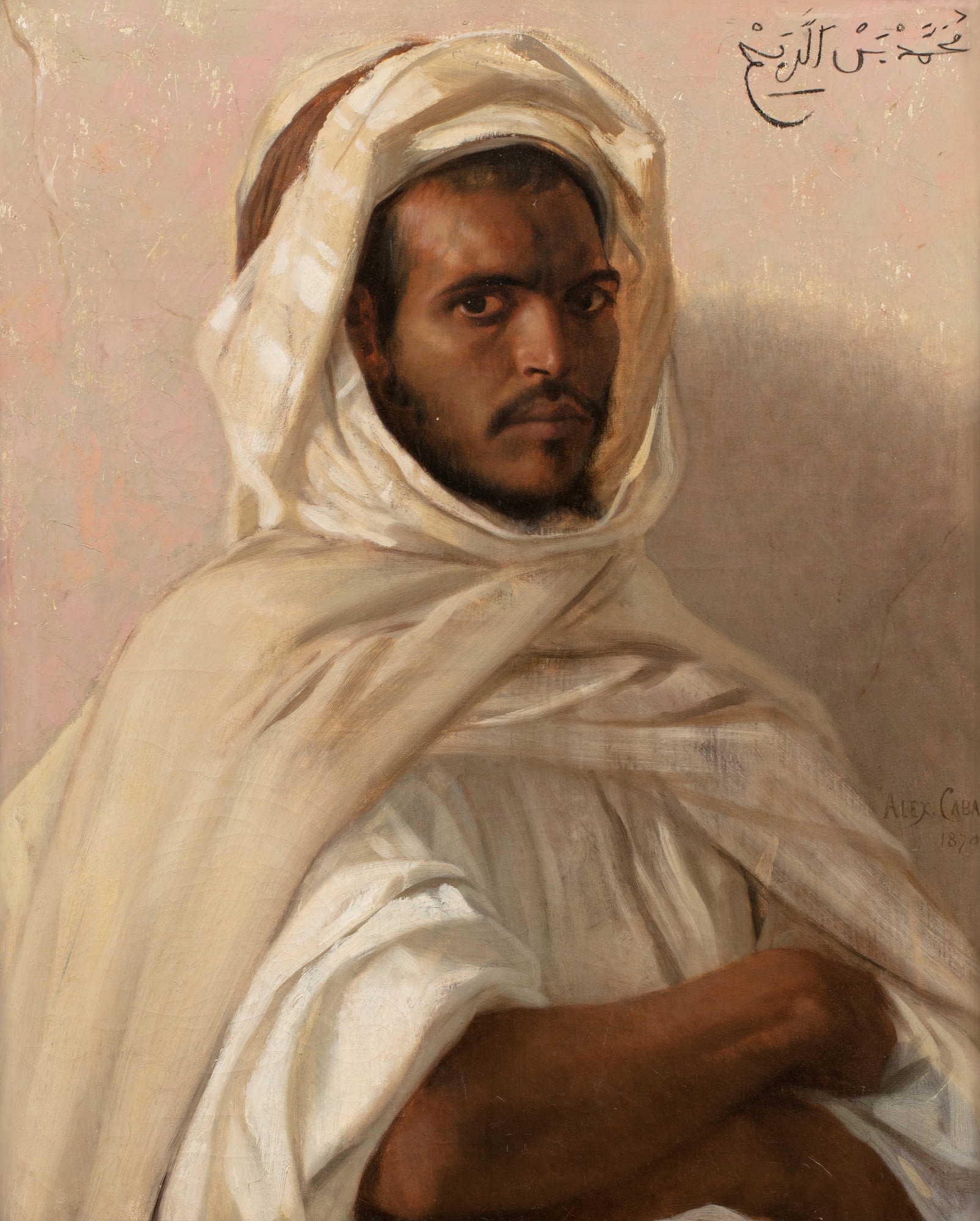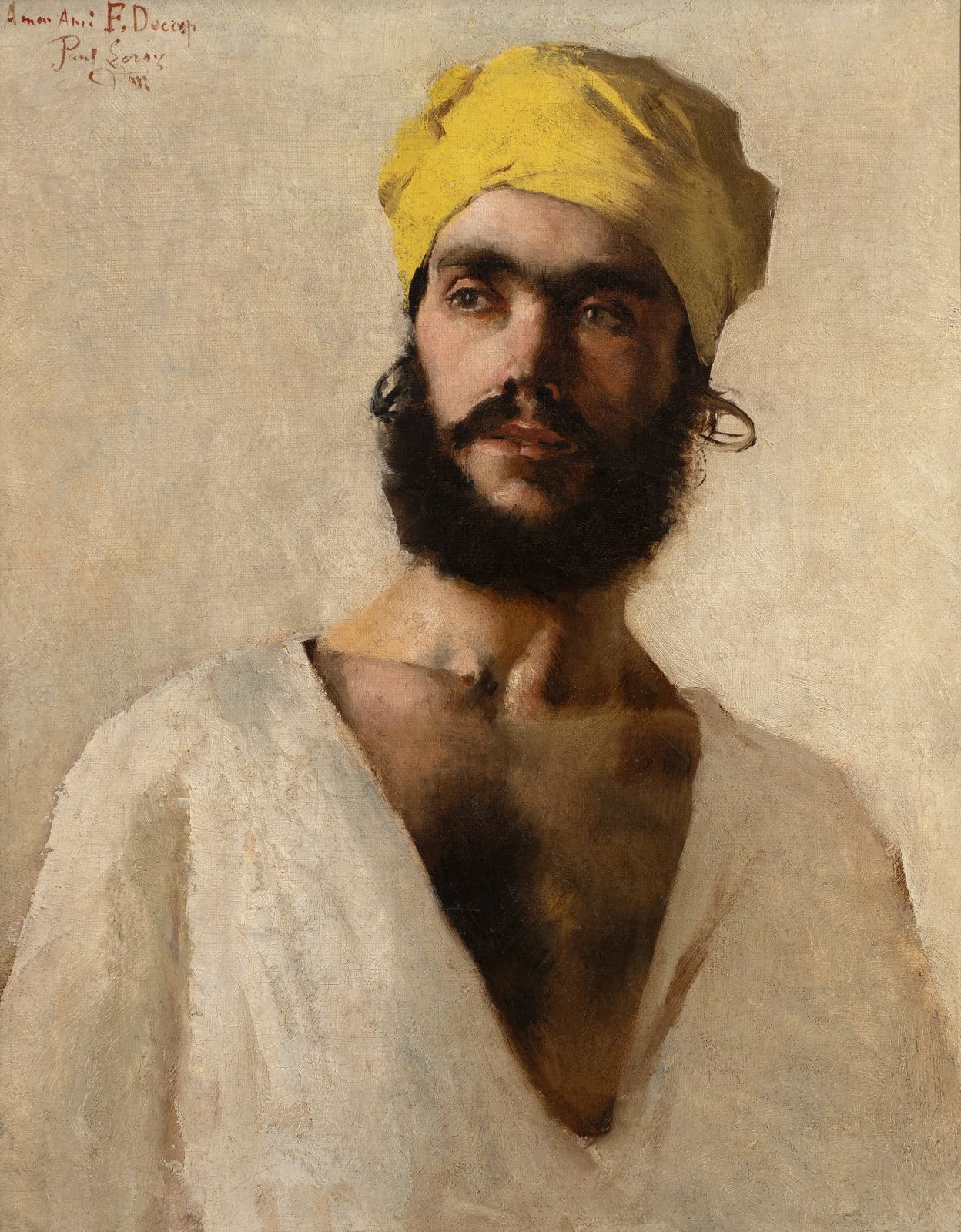Paintings
Paul Leroy (1860 - 1942)
Unjustly forgotten today, Paul Leroy (fig. 1) was certainly one of the most talented and original French Orientalist painters of the late-nineteenth century. He displayed a deep-seated and genuine interest in the history and culture of North Afri
Unjustly forgotten today, Paul Leroy (fig. 1) was certainly one of the most talented and original French Orientalist painters of the late-nineteenth century. He displayed a deep-seated and genuine interest in the history and culture of North Africa and the Near East, collecting Arab and Berber objects and artworks, as well as learning Arabic, whose script he used effectively in his paintings and lithographs. Leroy was also a founding member of the Société des Peintres Orientalists Français, a society responsible for the promotion of Orientalist art through mounting exhibitions and aiding French artists travelling in East.

Fig. 1, Paul Leroy, Self-portrait, 1883, oil on canvas,
Musée de Beaux-Arts de Quimper
Born in Odessa, though French by birth, Leroy started his artistic education in that city before moving to Paris in 1877 to study at the Académie des Beaux-Arts in the studio of Alexander Cabanel. His interest in the East, perhaps engendered by his upbringing in what is now the Ukraine, was already visible to the French public in his Salon-exhibited and gold medal-winning 1882 depiction of Jesus in the house of Martha (fig. 2), shown to great acclaim and much-admired by Cabanel. The scene takes place in a white-washed generic Near Eastern dwelling, complete with tilework, carpets and ceramics inspired by the Islamic word.

Fig. 2, Paul Leroy, Jesus in the House of Martha, 1882, oil on canvas, Musée de Beaux-Arts de Rouen
This early success, combined with success in the 1884 Prix de Rome, gave Leroy a 4,000 franc travel grant, allowing him to visit Italy, then Turkey and Egypt in 1885 with his life-long friend the painter Georges Landelle, and finally Tunisia and Algeria in 1886. He would continue to visit the Near and Middle East frequently, going on regular trips to Constantinople, Persia, Egypt and Algeria, the latter of which he returned to a further seven times, being particularly enamoured with the oasis of Biskra on the northern edge of the Sahara.
Ferdinand Decap, the subject of the portrait, was a fellow student in Cabanel’s atelier and clearly a close friend of Leroy’s, though beyond this very little is known about him. Dated to 1882, three years before Leroy’s travels, the portrait, like the contemporaneous Jesus in the House of Martha, clearly demonstrates the young artist’s interest in Orientalist motifs. The bright yellow turban, jangling hoop earrings and cotton shirt were possibly artistic props found in Cabanel’s studio, who was himself interested in Orientalist subject matter (fig. 3). An expression of friendship, Leroy’s portrait is the playful result of two young artists enjoying themselves in the studio during the earliest years of their careers.

Fig. 3, Alexander Cabanel, Portrait of a North African, oil on canvas, 73 by 60 cm, Private Collection
